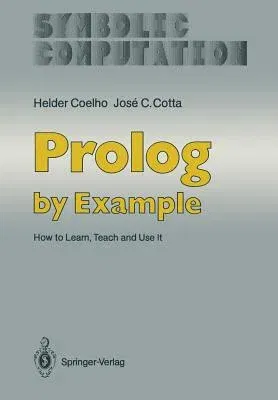Helder Coelho
(Author)PROLOG by Example: How to Learn, Teach and Use It (Softcover Reprint of the Original 1st 1988)Paperback - Softcover Reprint of the Original 1st 1988, 16 December 2011

Qty
1
Turbo
Ships in 2 - 3 days
In Stock
Free Delivery
Cash on Delivery
15 Days
Free Returns
Secure Checkout
Part of Series
Symbolic Computation / Artificial Intelligence
Part of Series
Symbolic Computation
Part of Series
Artificial Intelligence
Print Length
382 pages
Language
English
Publisher
Springer
Date Published
16 Dec 2011
ISBN-10
3642832156
ISBN-13
9783642832154
Description
Product Details
Authors:
Book Edition:
Softcover Reprint of the Original 1st 1988
Book Format:
Paperback
Country of Origin:
NL
Date Published:
16 December 2011
Dimensions:
24.41 x
16.99 x
2.06 cm
ISBN-10:
3642832156
ISBN-13:
9783642832154
Language:
English
Location:
Berlin, Heidelberg
Pages:
382
Publisher:
Weight:
625.96 gm

